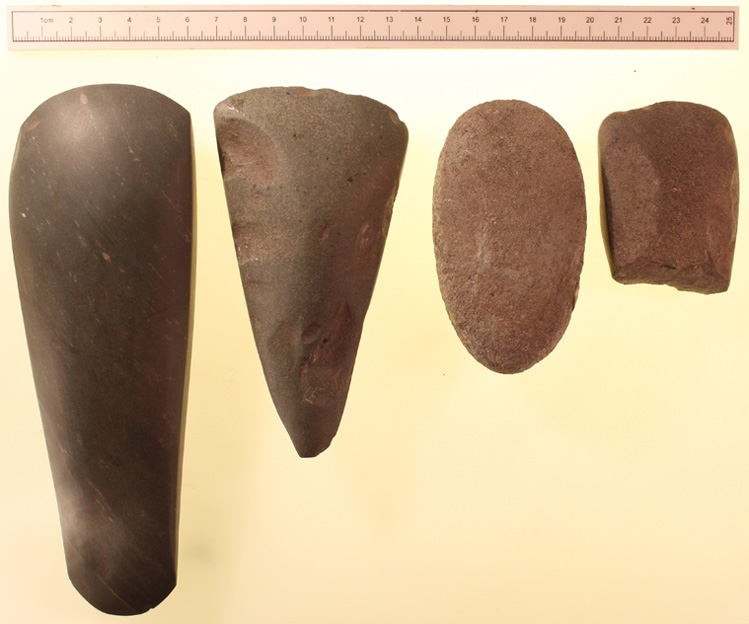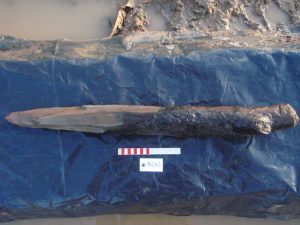Four stone axes were recovered by the excavation at Stainton West, three of these axes were manufactured from Langdale tuff, which is derived from Lake District sources, and one was made from a coarse quartzite pebble, probably a glacial erratic. All of the axes were retrieved from the palaeochannel, with the tuff axes being associated with the Early Neolithic wooden platform. Additionally, many fragments of Langdale tuff, which may have derived from axe maintenance or manufacture, occurred within the lithic scatter adjacent to the palaeochannel.

These stone axes are one of the iconic tool forms of the Neolithic and may have said much about the status and identity of the user as well as being functional objects. One of the axes was broken, whilst the other three were complete. Of these complete axes one was in pristine condition when deposited, and the other seems to have been extensively modified, being flaked down from a much larger blade. It seems unlikely that these were chance losses, instead rather like many of the other items retrieved from the palaeochannel they seem to have been deliberately discarded in it, the significance of which we can only speculate, although ritual behaviour is the most widely accepted hypothesis.

